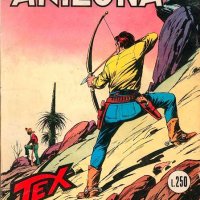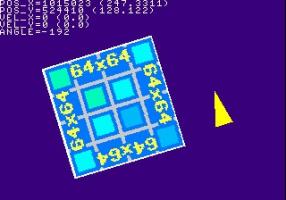The Arizona State University Amiga Lab
AMIGAphile Volume 1 Number 2 (AUGUST 1992)

An update on the future...
When the ASU Amiga computer lab was installed in December of 1990, we declared our dedication to develop four areas of emphasis around the Amiga: Instruction, Research, Information, and Development. It is our pleasure to inform you of the accomplishments we have reached in each of these areas over the past year and a half.
EQUIPMENT
The lab consists of 13 Amiga 3000/25-50s, 5 Amiga 2500/30s, each with 50MB harddrives. All A3000s have 6MB RAM with 2MB Chip ram. Peripherals to the computers include: Video Toaster, DCTV, Sony LDP-2000 laserdisc player, Sony RGB video projector, CDTV, SoundMaster, VoRec One, laser printer, Syquest 88MB drive, A2286 BridgeBoard, Edmark TouchWindow touch screen, and other miscellaneous audio/video devices.
INSTRUCTION
Three semesters worth of classes have been offered specifically for the Amigas.
- AMIGA TECHNOLOGY; first in the Amiga series of classes, "AmiTech" has been offered twice. Teaches up to twenty undergraduate and graduate students the unique aspects of the Amiga platform and familiarizes them with the operating system and the various hardware and software options available.
- AMIGA ANIMATION; next in the series of classes, "AmiAnim" offers an in depth study of animation techniques using Deluxe Paint, Disney Animation Studio, and Imagine 3D modeling software. Many students enhance their products with digitized sound effects. Students are encouraged to enter their final projects into the AmigaWorld Animation Contest.
- INSTRUCTIONAL TELEVISION; not specifically in the line of Amiga classes, students had the option to use our NewTek Video Toaster to add special effects and titles to their video productions. With a new multicamera Hi8 video production system recently delivered, this class will be offered again in the future with more emphasis on Desktop Video.
- AMIGA PRESENTATION/AMIGA INSTRUCTION; two other classes which are in the planning stage. Students will use AmigaVision, Foundation, or other authoring systems to create multimedia presentations or instructional applications. Projects may be stand alone or incorporate laserdisc or videotape technology.
Every Amiga class offered has immediately filled up during early registration. In fact, this Spring semester's Amiga Technology enrollment would have approached 100 students if all requested overrides were granted. Unfortunately, the number of Amigas in the lab limits the enrollment to 20 per class.
RESEARCH
The first summer after the Amiga lab was installed, we offered a special program called AMIGAKIDS. A spin-off of ASU's successful Center for Academic Precocity (CAP), AmigaKids was a heuristic study of how children relate and interact with computers. With five video cameras placed throughout the lab, over 300 hours of valuable data were recorded. The AmigaKids program received national coverage on a cable channel program called Campus Directory which spotlighted the Amiga computers being used at ASU.
Taking the AmigaKids program one step further, a grant was awarded to the Amiga lab from the State Department of Education's Migrant division. We are giving 20 Amiga 2000HD/P computers with software, modems, and printers to a selected group of disadvantaged children. They will use the Amigas for schoolwork, writing journals, and creating graphics with Deluxe Paint 4 which they will upload to an Amiga bulletin board system installed at ASU called The PRIDE Network. This project, will continue to expand and a network of students using Amigas will begin to use the BBS for the sharing of information and files.
Other significant plans are under way as well, including an important partnership with the Phoenix Union High School District and their MetroTech vocational high school.
INFORMATION
We are constantly receiving requests for Amiga demonstrations and are happy to provide information about Amiga computers to educators who are not familiar with the Amiga as a creative tool. Many conventions held in the Phoenix area attract visitors from around the world. Here are some of the highlights that we have participated in:
- National Educators Computing Conference
- National Art Educators Association
- Microcomputers in Education Conference
- East Valley Personnel Management Association
- Tempe Union High School District PACE program
- Phoenix Union High School District FUSION project
- Computer Graphics and Animation Association
- Classes from Interactive Computer Graphics major
- Classes from Educational Media and Computers major
- many many more...
DEVELOPMENT
We are dedicated to the ideation, development, and production of instructional material for the Amiga. This includes everything from self-paced software tutorials to interactive laserdisc instruction on the water cycle.
One of our overall goals is to develop the Electric Classroom where students can stay at home and insert a disk into their Amiga with a weeks worth of instructional material on it and follow through it at their own pace. This will be accomplished by combining the resources of instruction, research, information, and development at the Amiga lab.
In addition to producing materials in-house, our diverse range of software and hardware facilities offers an ideal site to test new products from outside companies. We were a beta test site for the Commodore Amiga 3000UX UNIX platform and CDTV before they were released. We were involved in testing Impulse's Foundation authoring system. We were the first Amiga site to receive an Edmark TouchWindow touch screen with Amiga software drivers. We are hoping to work with Kurta to test software drivers for their drawing tablets. Hopefully by informing the public of the ASU Amiga lab's capability, we can encourage other hardware and software vendors to test their products in our university environment where many different people have the chance to use them.
HERE'S TO THE FUTURE...
A few short years ago, the ASU Amiga lab was a mere dream in the eyes of a few people. Today, the Amiga has surpassed all expectations and continues to grow. We will continue to press the limits of what is "current" to reach even greater aspirations.
I am certain this report will require regular modification, and will be presented again for your information in the future.
If you have questions or would like to contact us for any reason, please write or call:
ATTN: Amiga Computer Lab
Educational Media & Computers
Arizona State University
Tempe, AZ 85287-0111
USA
EMC department office: (602) 965-7192
Brian C. Berg
Arizona State University Amiga Lab






















